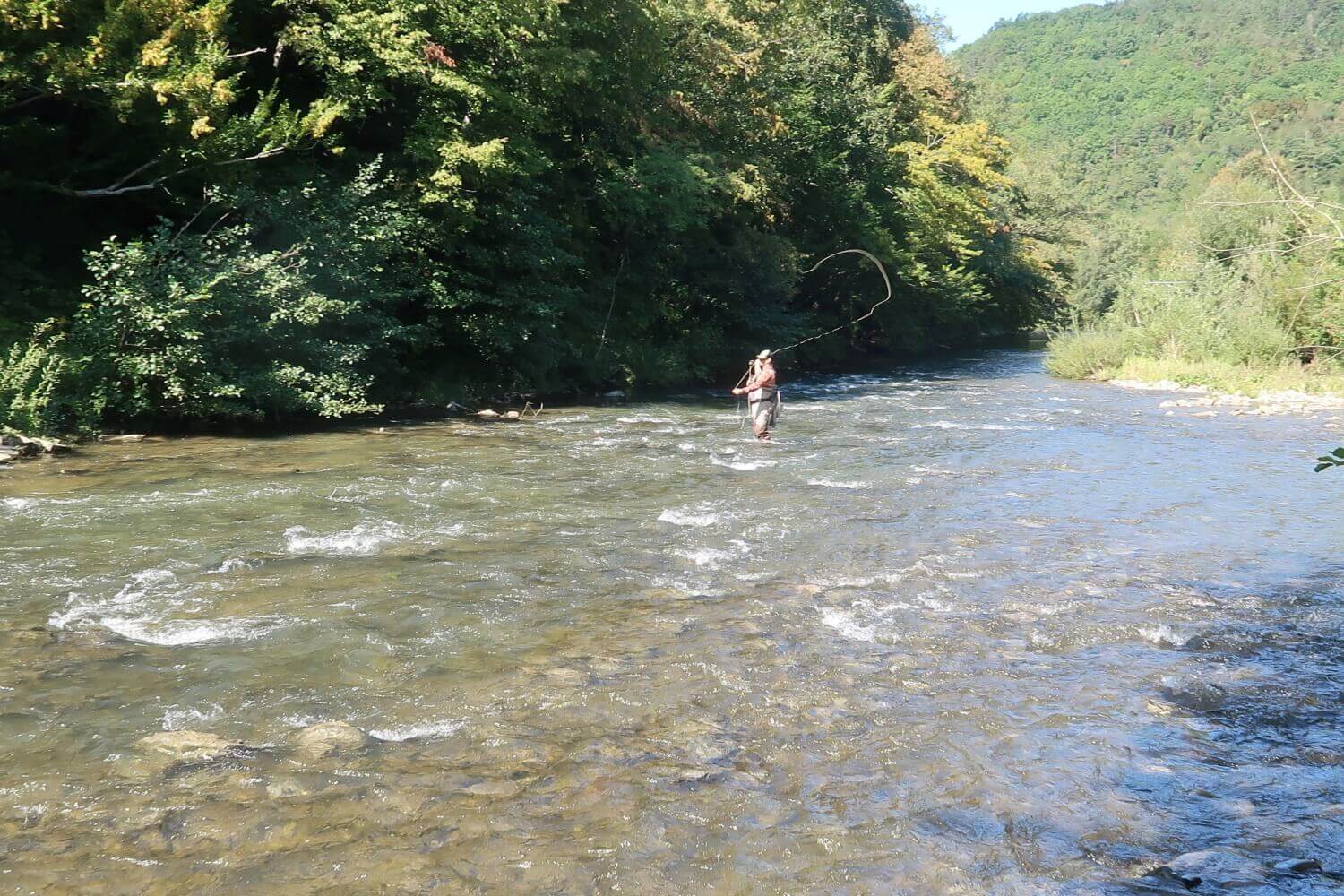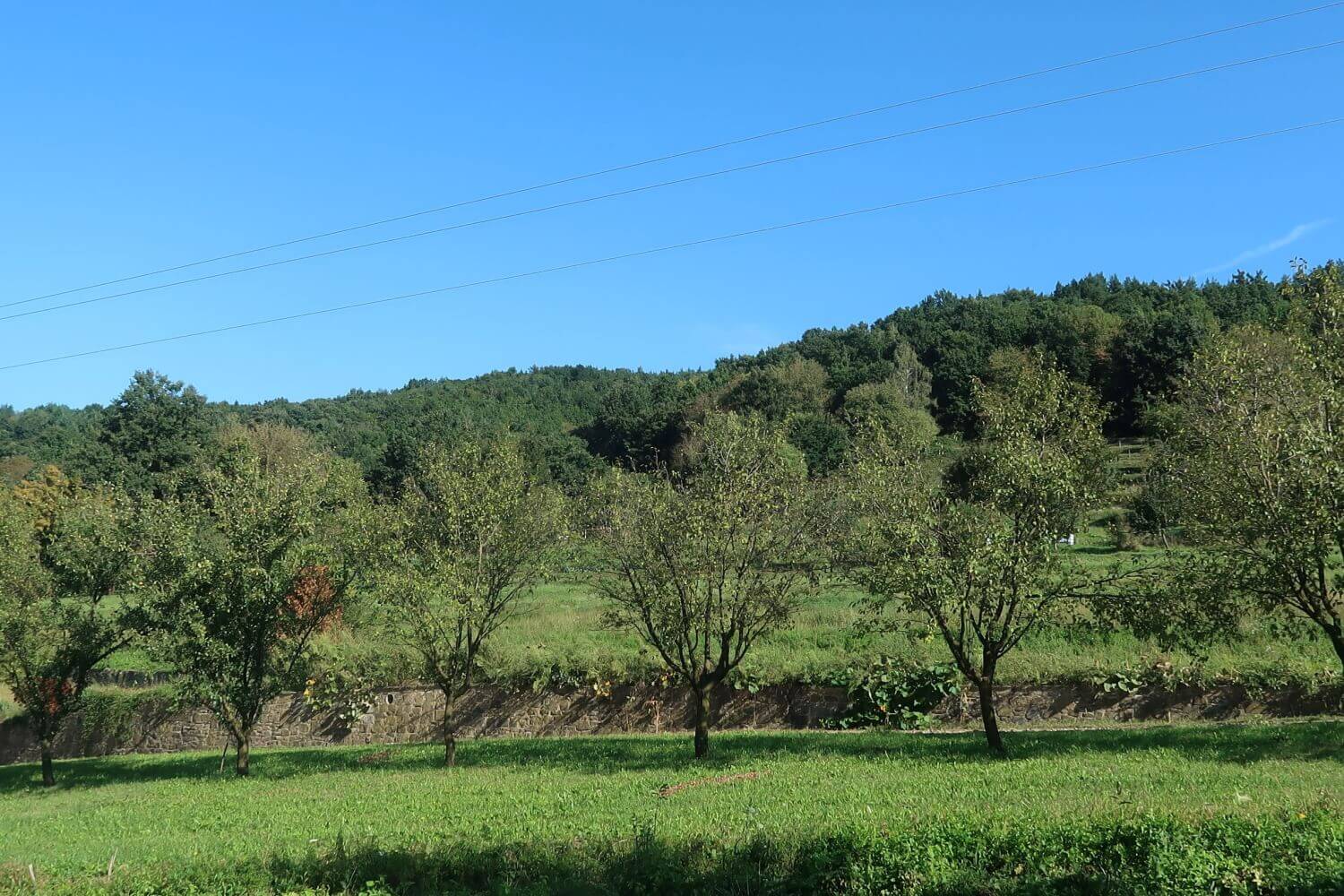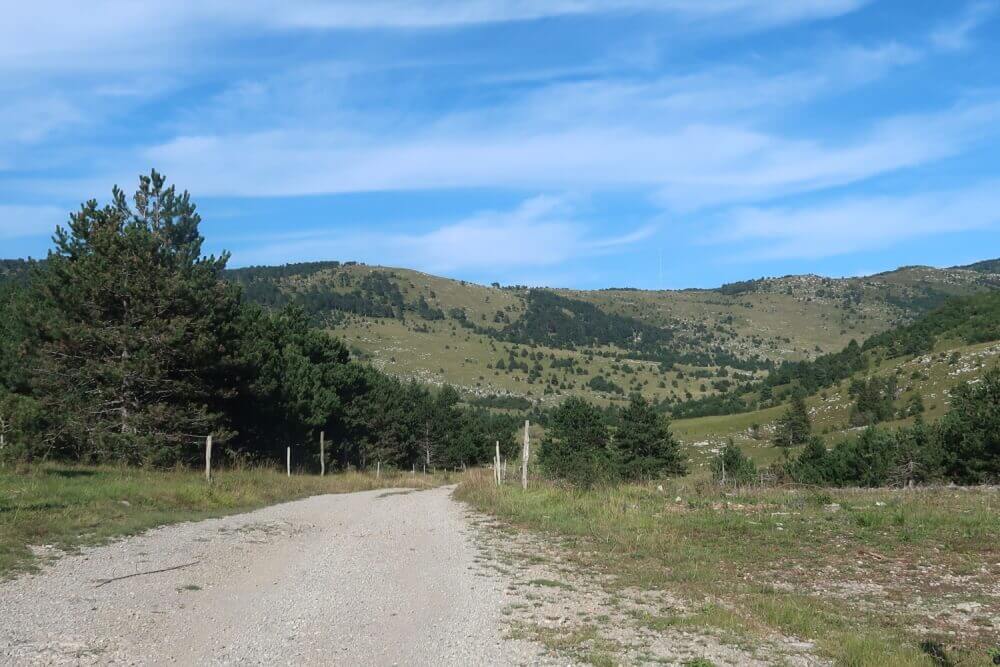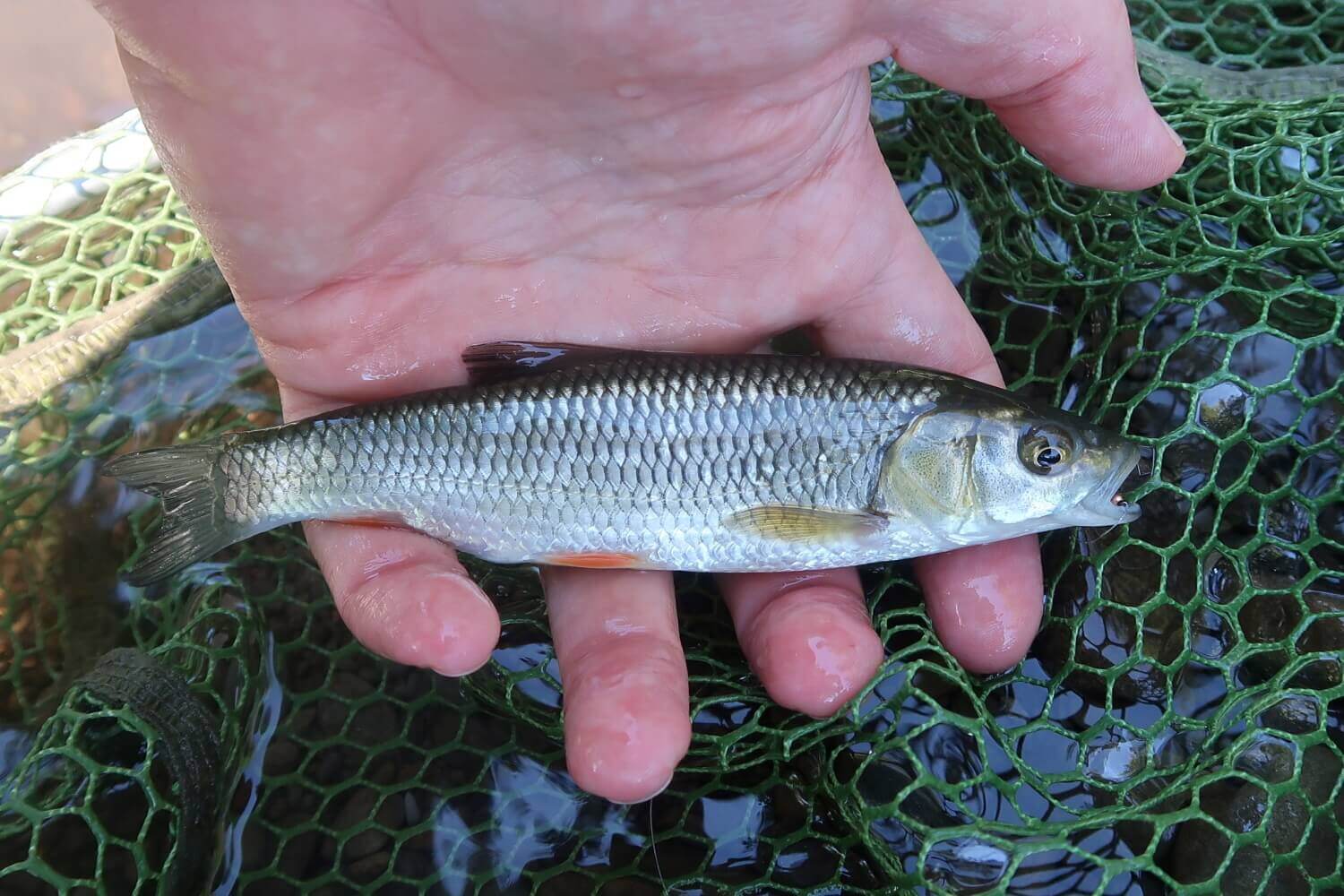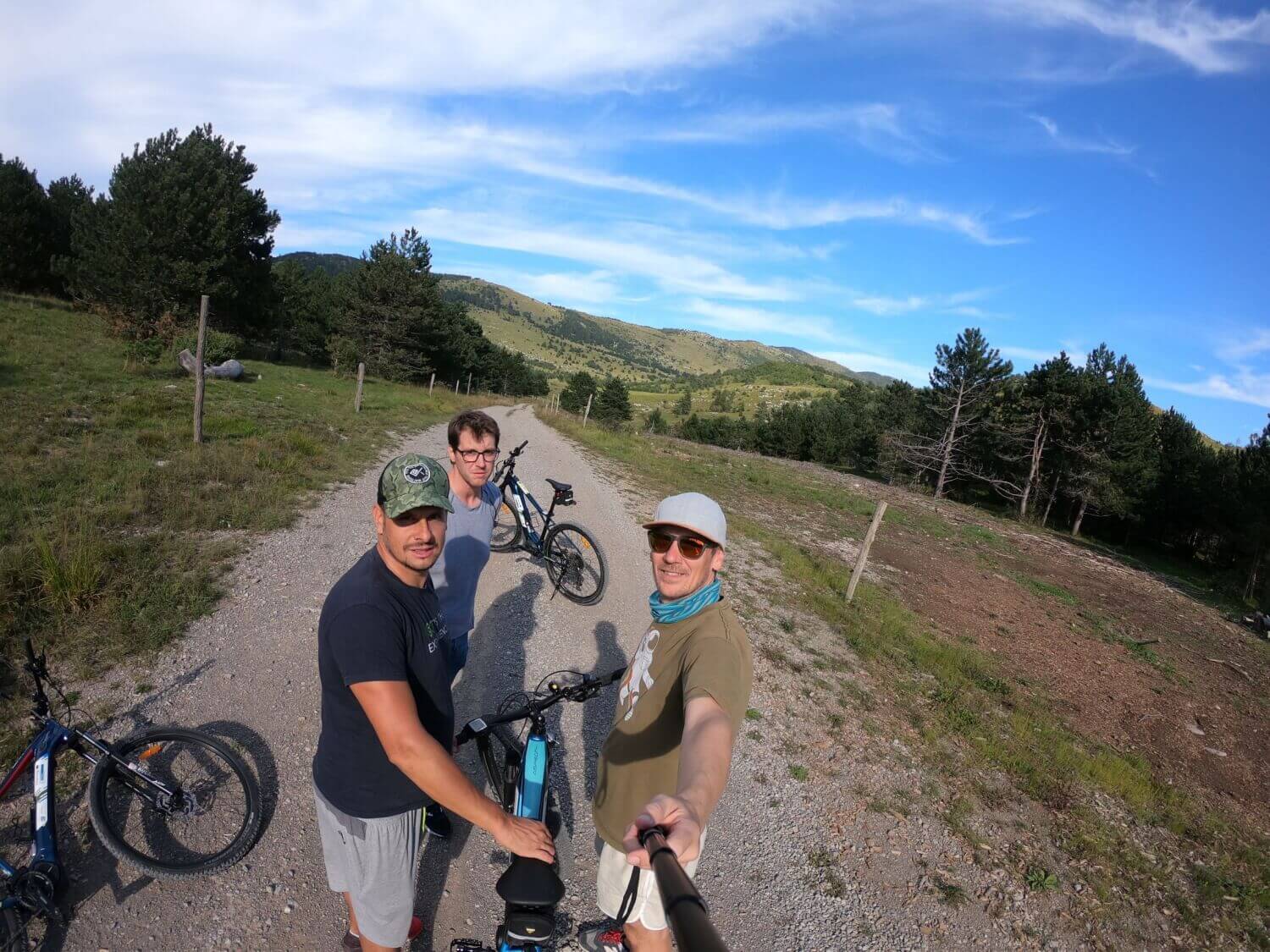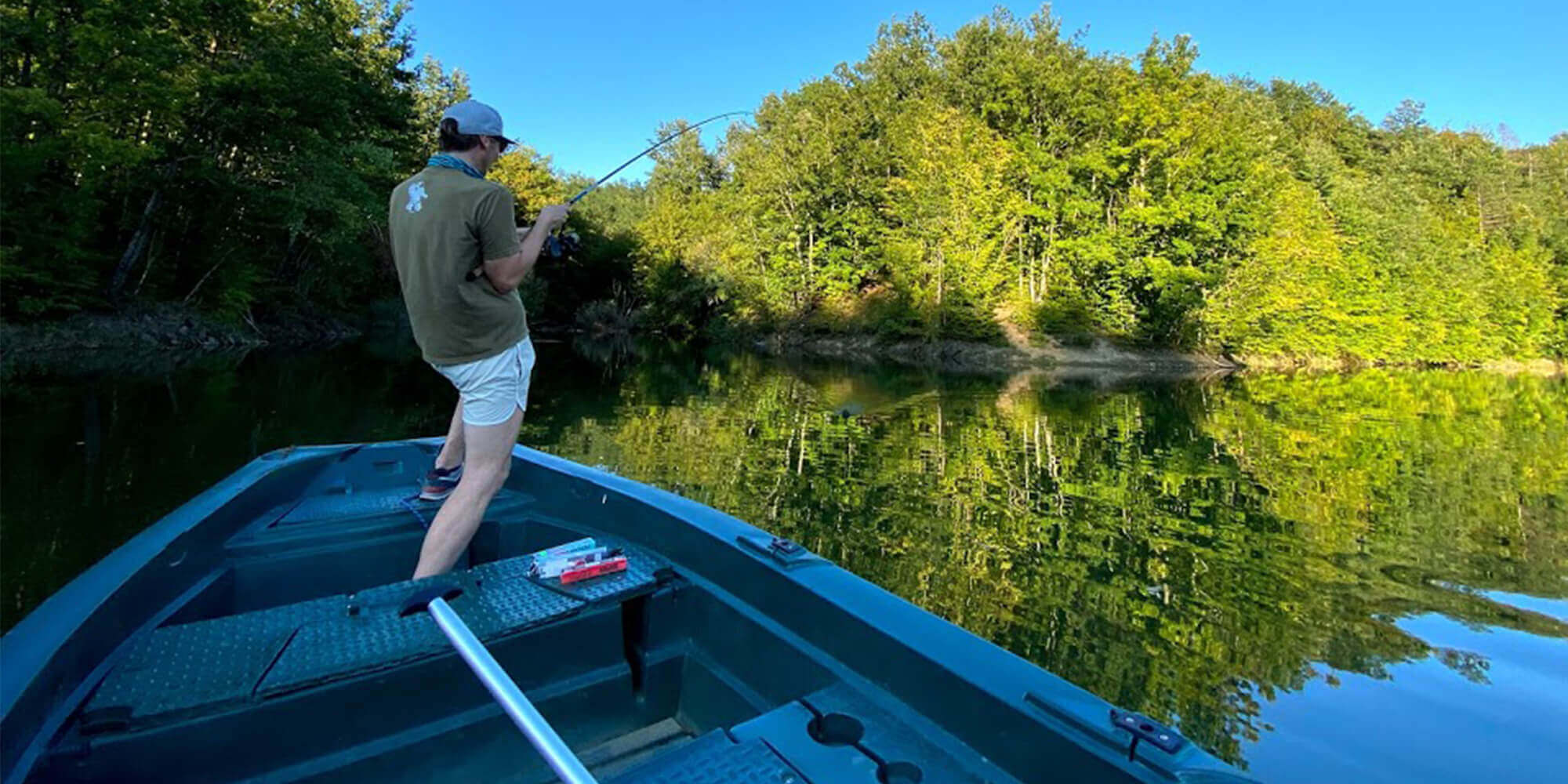Travel
STA, 11 December 2020 - Despite the restrictions related to the Covid-19 epidemic, skiing season is starting in Kranjska Gora, Pohorje above Maribor and at Krvavec, but only for locals. The accompanying activities are prohibited, though, so the question is whether ski lifts will operate for long if restrictions are not lifted.
The first ski lift in Kranjska Gora was launched on Thursday, although only locals may visit the resort due to the ban on travel between municipalities. Another ski lift is scheduled to be launched today.
The local ski lift operator is thus the first to start the skiing season in the country, and although all accompanying programmes and activities are suspended, the locals have already hit the slopes in Kranjska Gora.
Blaž Veber, the director of the tourism company Turizem Kranjska Gora, says that such a start of the season nevertheless raises a lot of questions.
"We are all actually confused, because we don't know what is right and what is wrong," Veber told the STA on Friday, adding that coronavirus measures had been expected to be relaxed in accordance with the government's plan adopted last week.
"Only ski lifts are allowed to be launched. This is too little for any serious ski resort to operate with economic feasibility. This is exactly the situation we have found ourselves in," he added.
One of the problems is that skiers are not able to purchase passes in person, but only online, and that no other services could be provided in the ski resort.
For the time being, skiing is allowed only to locals, with the entire municipality of Kranjska Gora numbering only around 5,200 residents.
Skiing season is also starting on Saturday in the Pohorje Hills above Maribor. Marprom, the company operating the ski resort, said that daily passes would cost EUR 20, with discounts for students, pensioners, children and disabled persons.
Skiers will be required to wear face masks, and restrictions related to the number of persons riding open-air ski lifts are also in place. While waiting in lines and skiing, skiers are required to keep a safety distance of at least 1.5 metres.
While Kranjska Gora could have problems with attendance due to the small size of the municipality, Pohorje is looking at a much higher potential number of skiers as the Maribor city municipality numbers more than 112,000 residents.
Four open-air ski lifts will also be launched on Saturday at Krvavec, north-east of Kranj, the operator RTC Krvavec said, noting that the gondola lift would not operate, and that access to the resort would be possible only by car.
The remaining major ski resorts in the country - Rogla, Kope, Vogel, Kanin and Golte, will not open at the weekend either because of the municipal travel ban or the ban on the use of enclosed gondola lifts.
STA, 8 December 2020 - Slovenian tourism is preparing for long-term recovery after the Covid-19 pandemic. The recovery plan will span until the end of 2023, with tourism resilience being strengthened for years to come, the central annual event in the sector heard. Economy Minister Zdravko Počivalšek thinks that the sector will return to record-breaking results.
This year's virtual Days of Slovenian Tourism revolves around response efforts in the wake of the coronavirus crisis.
Počivalšek noted at Tuesday's event that the number of tourists in Slovenia in the first ten months of 2020 dropped by 46% and the number of overnight stays by 37% compared to the same period in 2019.
When it comes to foreign tourists, the number of arrivals plunged by 72% and the number of overnight stays by 69%.
By the end of October, almost 6,000 tourism workers registered as unemployed at the Employment Service. Moreover, many are furloughed.
Počivalšek also pointed out that numerous tourism companies had pushed back investments due to the precarious situation.
"A longer recovery period is expected, perhaps even five years," he said, highlighting that tourism would need extensive support from the state and EU.
He vowed additional aid for the hospitality and tourism sectors and the meeting industry in the emerging seventh stimulus package.
Domestic tourism consumption will continue to be boosted by tourism vouchers, whose validity has been extended until the end of 2021, he said.
The way forward will be outlined in the 2020-2023 recovery plan. Shareholders are also coming up with projects to draw on EU funds.
Počivalšek expressed optimism regarding EU financial instruments designed to help the sector after the pandemic and said that depending on the epidemiological situation, Slovenia's partial lockdown could be eased by reopening facilities in the tourism and hospitality sectors among other things.
He believes that Slovenia's tourism will be again breaking records and bagging achievements.
Slovenian Tourist Board (STO) boss Maja Pak presented updated tourism forecasts for this year. The organisation is a bit less optimistic given the worsened epidemiological status at the end of the year as it was in late summer.
Until the end of 2020, the STO expects a 51% decrease in the number of tourists, including a 74% drop in the arrival of foreign tourists.
The number of overnight stays is expected to decrease by 42% on 2019. "This means that this year we will lose seven million overnight stays due to the pandemic," she said.
Next year is forecast to deliver similar figures. The STO anticipates a bit more foreign guests and somewhat fewer Slovenian tourists.
The number of tourists from abroad is expected to rise in years to follow, boosting tourism growth.
The recovery plan is based on several phases. The first-response phase is to be followed by the recovery phase, which is to last until the end of 2023.
The second phase will focus on the domestic market as well as neighbouring or nearby markets. Public calls as well as public health measures will be adjusted.
The third phase will focus on strengthening resilience, running until 2026. Restructuring and development of tourism infrastructure will be in focus.
Tourism will have to be at the heart of the national recovery and resilience plan, Pak said, adding that sustainable and digital development should be key.
She highlighted, among other things, re-establishment of air links, business tourism and investments as future challenges.
When tourism is relaunched, there will be many rivals, the STO boss noted, adding that Slovenia was at an advantage since it had been investing in sustainable or boutique tourism for years.
Andrej Prebil, the head of the Tourism and Hospitality Chamber (TGZS), meanwhile urged the government to draw up a separate stimulus package for tourism that would include all segments of the industry.
Additional funds for the STO are also necessary, he said, describing the organisation as the cornerstone of Slovenian tourism promotion.
Prebil believes at least EUR 10 million would be needed for recovery. Maintaining Slovenia's status as a green, active and safe country among foreign and domestic tourists is key, he added.
STA, 3 December 2020 - The government extended the validity of tourism vouchers until the end of 2021 on Thursday. Announcing the move, government spokesman Jelko Kacin said that the decision aimed to help the tourism sector, which has been badly hit by the epidemic.
Tourism vouchers were introduced as part of the third stimulus package, which was passed in parliament in late May.
They were given to all Slovenian residents - adults received a voucher of EUR 200 and minors EUR 50. The vouchers could be redeemed only in exchange for accommodation services.
The measure kicked in on 19 June and was available until the closure of all accommodation facilities during the autumn lockdown in late October.
The government first set down that the vouchers would be valid until the end of 2020, however already prior to the closure of hotels it acknowledged the possibility of extending the validity period.
The Financial Administration (FURS) data show that by 1 October some 883,100 vouchers worth EUR 113,74 million were redeemed.
Over two million persons received the vouchers, with the total value of the measure being EUR 356.9 million.
Holiday vouchers saved the summer tourism season in various places, particularly on the coast, in mountain resorts and spas.
On the other hand, the measure barely had an impact on the situation of accommodation providers in cities, and certain other destinations more popular among foreign tourists.
STA, 27 November 2020 - Christmas light displays will be turned on in a number of Slovenian cities and towns today. The epidemiological situation permitting, scaled-down on-site events are planned in some cities in December, however most will be held online. A leisurely stroll through the festively illuminated streets is another way to get into the holiday mood though.
The Christmas lights of Ljubljana will be switched on today, however this time around there will be no mass event celebrating the occasion.
A Christmas market is still on the cards in the capital, depending on epidemiological developments. If the event is given a go-ahead, the stalls could be rented at a 75% discount, Tourism Ljubljana said.
There will be no open-air holiday concerts or the St. Nicholas procession in the capital this year though.
Maribor citizens will get to see decorations and illuminated sculptures of the Elf City turned on today as well. The organisers of the magical and intimate festival will stage an online concert today.
The Elf City, running until 28 December, will aim to adjust to the situation on the fly. So far, the organisers have prepared either virtual events or creative activities for families or individuals that heed social distancing protocols.
"Due to these strange times we find ourselves in, we need miracles more than ever, but elves will create them in a safe way to make sure we all stay healthy," the organisers said.
Holiday lights are expected to be switched on in Maribor on 3 December, followed by the city's Christmas market as well, epidemiological circumstances permitting.
The arrival of Grandpa Frost, one of the three mythical gift-bringing figures in Slovenia, has always been a much anticipated event, however this year he will visit Maribor only via a televised appearance on 12 December.
In other cities and towns, St. Nicholas, Santa and Grandpa Frost will address children either online or they will ride their sleighs through the streets and wave from a safe distance.
Celje will turn on its festive lights on Saturday. The city does not plan any major events, however a festive market might still take place.
Ptuj intends to switch on the Christmas lights display next week. Moreover, residents will be able to enjoy Christmas songs outdoors while running errands in the city centre.
The oldest Slovenian town earmarked funds that used to go for firework displays to give gifts to children and the elderly in the past couple of years. This year, it will continue with this practice, also bringing gifts to vulnerable groups and safe house residents.
Kranj, the town where Slovenia's most famous poet France Prešeren spent his last years, will again decorate its streets with excerpts from his poems.
Lakeside resort Bled is to boast a life-size nativity scene and the biggest decorated Christmas tree in Slovenia.
Nova Gorica has vowed to display an innovative set of lights and plans to hold a book fair in mid-December. The municipality decided to allocate part of funds intended for the holiday entertainment programme to charity.
It has already donated EUR 5,000 to the local hospital to help purchase medical equipment to treat Covid-19 patients.
STA, 25 November 2020 - The government has not yet taken a position regarding Italy's appeal to close ski centres around Europe during the December holidays, the Economy Ministry told the STA on Wednesday. The ministry expects the European Commission to send recommendations for the skiing season to member states.
"The government has not discussed this issue or taken a position. We also assume that the European Commission will give recommendations based on the epidemiological situation and recommendations by medical experts, which will be forwarded to all EU members," the ministry said.
According to Italian media reports this week, the Italian government is proposing closing all ski centres in Europe during the Christmas holidays because of the coronavirus pandemic. Reportedly, Italy is striving to achieve this in cooperation with other countries, particularly its neighbours.
The Italian government proposes ski centres open at the end of January, when the second wave of coronavirus abates and a Covid-19 vaccine should be available.
If no restrictions are introduced, especially during the Christmas and New Year holidays, a third wave of the pandemic will follow in January, the Italian government has said.
Bavarian Premier Markus Söder said on Tuesday that the German state planned to have its ski centres closed during the winter holidays, and called on other European countries to do the same.
Austria, which has been saying for months it plans to have its ski centres open while adhering to safety measures, opposes Italy's proposal. Switzerland also plans to carry out the season.
Major ski centres in Slovenia are preparing for the season as well. Some, including Krvavec and Mariborsko Pohorje, have already started making artificial snow and selling tickets.
At a business forum organised by the business paper Finance, ski resort operators said they were worried because it was not possible to get ski resorts up and running overnight and they do not have a date when they might open.
"We're completely helpless at this point, waiting for the state to decide," said Manuela Božič Badalič, the chair of the Association of Slovenian Ski Lift Operators.
She was hopeful they may open on 15 December at the latest since it would be hard to make up for the revenue lost during peak ski season. And even if they open in December, "we would not be talking about profits, its about mere survival."
If ski resorts are required to remain closed, she expects compensation from the state. "We're not in the same position as industry, which can work anyway, we're subject to a complete ban, without revenue and with high fixed costs."
Janez Janša, the director of the company operating the Krvavec ski resort, lamented the lack of a clear Slovenian position regarding the Italian initiative and said he wished there was dialogue with the authorities so that solutions could be found.
STA, 25 November 2020 - Eight airlines - Turkish Airlines, Swiss Air, Air Serbia, Montenegro Airlines, Lufthansa, Air France, Wizzair and LOT - will receive state subsidies to operate flights to Slovenia. The first instalment of the incentive is worth EUR 985,320, the Economy Ministry said on Wednesday.
Nine carriers had submitted applications, all of which have previously operated flights to Ljubljana. EasyJet is the only applicant to be left out.
Lufthansa will be the biggest beneficiary with EUR 371,040, followed by Air France (EUR 176,160) and Turkish Airlines (EUR 148,530). The remaining five will get under EUR 100,000 each, with Swiss Air eligible for the lowest amount, EUR 22,050.
The ministry said additional clarifications were needed from Swiss Air and Wizzair. They expect the issues will be resolved shortly, but if they are not, the two carriers will not be eligible.
Under the terms of the scheme, the recipients of the subsidies will have to operate scheduled flights to at least one airport in Slovenia twice a week in the 2021 summer season, between 28 March and 30 October.
This is the first of three calls for applications, designed to improve Slovenia's air links in the aftermath of the coronavirus epidemic. Applications for the next two calls will be opened on June and October 2021. A total of EUR 5 million is available for the whole scheme.
The subsidies are capped at EUR 30 per passenger.
Already in the winter, before the start of this year's fly-fishing season in Slovenia, I made a plan for myself, which was based on visiting and thoroughly researching some fishing districts where I have not yet fished, or I have only fished a few times. The largest and longest sinking river in Slovenia - the river réka - was also on my list of much-desired fly-fishing districts in 2020.
The thought of karst beauty and my plan to dedicate myself this year to researching and fly-fishing of the indigenous fish species - marble trout and brown trout – was then ruined somewhat by the situation we found ourselves in with the beginning of the COVID-19 crisis in March 2020.
Green Karst Slovenia
That is why I was all the more pleased with the invitation of RRA Zeleni Kras (Regional Development Agency Green Karst), which invited me on a study trip through the green karst. The invitation included fly-fishing on the Réka River, pike fishing on the Mola Reservoir, fly-fishing on the Queen of Slovenian Waters, the Unica River, exploring the underground world by visiting Planins cave, cycling on electric bikes and enjoying local cuisine at the surrounding tourist attractions.
Photo: Fly-fishing in Slovenia with Flyfishingodec | Green Karst Slovenia
The River Réka, best known for creating the beautiful and world-famous Škocjan Caves over the millennia, along with the Mola Reservoir, are managed by the Bistrica Fishing Family based in Ilirska Bistrica. The Réka River belongs to the Adriatic basin and is a typical karst river with torrential impact caused by its many tributaries, which the Bistrica Fishing Family uses for its breeding streams and for the maintenance of its breeding flock of native marble trout.
Photo: Fly-fishing in Slovenia with Flyfishingodec | Green Karst Slovenia
Fly-fishing on the river Réka
At the time of my visit, the conditions for fly-fishing were perfect and the water level did not exceed 6 m3 / s, despite the previous heavy rain, which filled the riverbeds of most Slovenian watercourses. As such, the rain changed the course of our trip to such an extent that we had to give up fly-fishing on the Slovenian queen of rivers, the Unica. However, if you want to learn more about that river then just read my blog about fly-fishing there.

Photo: Fly-fishing in Slovenia with Flyfishingodec | Green Karst Slovenia | River Unica
Just the elevated water level and turbidity, unspoiled nature, interesting hunting passages between long pools and rapids, peace and tranquility aroused a number of familiar and beautiful feelings in me. I have to say I felt wonderful. And this wonderful feeling, happiness and contentment are the reasons I love fly-fishing so much. It inspires me and gives me the strength I need in these unpredictable times. As a guide and teacher of fly-fishing, my travel study trip also gave me a new insight into my work as a guide, which I have been doing as a professional for five years now. I have never been in a situation where I was led on any Slovenian river by someone who is not my friend or acquaintance. In the role of a guide to the Bistrica fishing district, the locals, Mr. Emil and Mr. Biščak, showed me and Boštjan, who manages the well-known fishing site fishing permits for all Slovenian fishing areas, some interesting hunting places that are easily accessible to everyone. Despite the fact that the River Réka is heavily overgrown with lush vegetation, we drove to all the hunting places. The overgrown parts of the Réka give the indigenous marble trout, brown trout and other fish species excellent shade and an effective hiding place from predators. But with its distinct green summer color palette, it conjured up a moment that I will never forget.
Photo: Fly-fishing in Slovenia with Flyfishingodec | Green Karst Slovenia | River Réka
The fish in the Réki river are extremely careful, which was also evident in the total number of fish caught in two hours. I was lucky enough to catch only a small chub, which I tricked with a classic rabbit ear tie in size #14, and Boštjan was delighted to catch the indigenous marble trout, which we later found out may have been a "crossbreed" and not a real marble trout. We could have caught more fish, but our time for fly fishing was running out and we were forced to put away our fly rods, as the organizer Dejan was pushing us a bit because we had to follow a schedule.
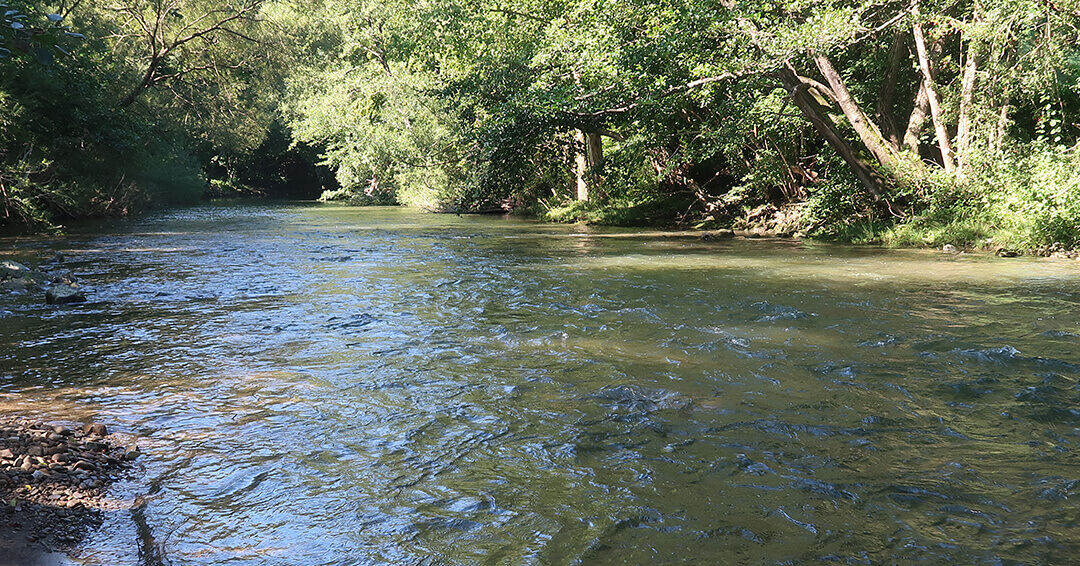
Something more
After an excellent lunch at the restaurant Pri Zotlarju, right next to the main road that leads through Vremska Britof towards Ilirska Bistrica, Boštjan, Dejan and I went for a short ride on electric bicycles, which we borrowed from TIC Ilirska Bistrica for this occasion by prior arrangement.. Given the limited time, we shortened the planned circular route, which started at Črne Njive, but I must say that I was very impressed by what I saw and experienced. Cycling along the paths of the pine forest (by the way, I should explain that the pine forest was planted according to a plan from the 1950s), which offers excellent protection to the fertile soil of the Dinaric-Karst region and all small ruminant farmers, although these are in short supply.
Photo: Fly-fishing in Slovenia with Flyfishingodec | Green Karst Slovenia | E-bikes cycling
After a short cycle and interesting adventure, the three of us drove together towards the accumulation lake MOLA, where the Bistrica Fishing Family has a beautifully landscaped fishing lodge. The lodge was not empty, as Boštjan and I were very well received by prominent representatives of the Bistrica Fishing Family, and it was not long before a "debate" on current fishing topics quickly broke out. Considering that the summer sun was slowly disappearing behind a nearby hill, we took advantage of an available boat with an electric motor and quickly made a circle around the Mola reservoir. Of course, we also used our ride to hunt for pike, but didn't catch anything. Still, on the boat, we enjoyed nature and greeted fellow anglers on the shore, eagerly awaiting their catches.
Photo: Fly-fishing in Slovenia with Flyfishingodec | Green Karst Slovenia | Spinning lake Mola
A short feast followed, during which there was no shortage of fishing stories that made us laugh from the heart. After a great barbecue dinner, Boštjan and I headed home late at night. Full of impressions and wonderful experiences, I decided to return to this beautiful and somewhat forgotten part of Slovenia soon. What about you?
Thank you
On this occasion, I would like to thank Dejan again for the invitation and excellent organization. Thanks also to the Peternelj Tourist Farm, which hosted Boštjan and me and offered us accommodation. Thank you to the Bistrica Fishing Family for the accompaniment and friendly reception, especially to Emil and Iztok. Thank you all!
More from Matej Godec: Get Closer to Nature & Go Fly-Fishing in Slovenia, Fly Fishing on Unica - the Queen of Slovenian Rivers! And you can learn more about Matej’s work, and book a tour, at his website, and see more pictures on Instagram. If your planning a fishing trip and not everyone in your party is an angler, then check out some of the other ways you can enjoy the River Soča and its surroundings - the ideal location for an active vacation.
STA, 16 November 2020 - Public transportation in Slovenia is suspended from Monday, with the exception of taxis and organised transport services for workers. New border crossing restrictions also become effective on Monday as part of stricter measures to stem the epidemic. Exemptions from mandatory quarantine for people entering Slovenia have been narrowed.
All inter-city and city transport services are suspended same as they were during the spring lockdown. What is allowed is transport services organised by employers for their workers and taxi services.
Up to six co-workers may share the same vehicle when driving to or from work, according to the Infrastructure Ministry.
Regarding the toughening up of border restrictions, a special exemption that allowed owners of property or a vessel in neighbouring countries to visit for 48 hours without needing to quarantine has been scrapped by a government decree passed on Thursday.
Moreover, 72-hour visits to relatives across the border are no longer allowed unless in the case of visits to EU and Schengen zone countries.
Cross-border migrant workers now have a 14-hour window to return to Slovenia after going to work in a neighbouring country.
Certain types of emergency business and personal visits used to be exempt from mandatory quarantine for stays of up to 48 hours. This time window has now been narrowed to 12 hours and only emergency business visits are allowed.
Persons who arrive from a red-listed country are still able to end quarantine prematurely if they get tested, but they need to quarantine for at least five days.
They can still avoid quarantining if they produce a negative test on arrival that was not done more than 48 hours ago.
All Slovenia's neighbouring countries are on its red Covid-19 list.
All our stories on Slovenia and coronavirus
STA, 9 November 2020 - The construction of a motorway between Postojna and Jelšane, for which the government recently launched procedures for the national zoning plan, will start after 2030, the national motorway company DARS said on Monday. The zoning plan is to be adopted at the end of 2027.
According to DARS, the national programme for transport development until 2030 envisages the construction of the Postojna-Jelšane section after 2030.
The government decided last month to go ahead with the national zoning plan for the 38-kilometre section that will link the Slovenian motorway system with the Croatian port city of Rijeka, some 30 kilometres south of the Jelšane border crossing.
The motorway is to run through the municipalities of Postojna, Pivka and Ilirska Bistrica, the government said.
The section has also been classified as a part of long-route connections of international importance in the transport networks of the Adriatic and Ionian Initiative.
"The new road connection will significantly improve the transport situation in the existing system of state roads in the relevant area. It will unburden existing roads and improve road safety," the government said, adding that it would also function as bypasses for towns and places it will pass.
The government decided to prepare the national zoning plan for the Postojna-Jelšane section in 2013, and studies have been ordered to look into possible routes. Years later the government decided the Postojna route was the only viable option.
In line with the timeline of the Ministry for Environment and Spatial Planning, it will take about three years for the government to approve the route of the section. This is to be followed with zoning work and only after that will blueprints be drafted, properties and relevant approvals acquired, the final step being a tender for contractors, the newspaper Delo reported last month.
The paper also said that locals from Pivka would likely object to the route. Mayor Robert Smrdelj told the paper that the potential routes clash either with Natura 2000, cultural heritage or water sources.
In order to avoid this, the solutions move the route closer to villages. "Because the course is planned too close to villages, there may be a lot of bad blood in the Pivka area."
Locals in Pivka would rather see that this motorway section run from Divača, further west along the existing motorway, to Jelšane. Smrdelj told Delo that there was "significant political pressure" that the motorway section to Jelšane run from Postojna.
STA, 9 November 2020 - Works began Monday on a section of the Gorenjska railway leading from Ljubljana to the border with Austria. Infrastructure Minister Jernej Vrtovec said this was just the beginning and announced upgrades of other sections, new tracks, and a connection to Brnik airport.
This year marks 150 years since the official opening of the Gorenjska railway, and the tracks were last replaced 40 years ago. The entire route, which is important for the economy, is in dire need of renovation, the minister said.
After the modernisation, the tracks will be suitable for heavier trains and slightly higher speeds, he explained as works began on the Kranj-Lesce section.
"The ministry wants to strengthen railway transport in Slovenia both because of sustainable mobility and the awareness of how important this is for the Slovenian economy," the minister said.
He is convinced that people would use trains more often too if they were faster and more efficient.
Studies are under way to find new shorter routes and routes that will allow dual tracks, especially to Domžale, Kamnik and Kranj. A connection to Brnik airport is also planned.
The Škofja Loka railway station will be renovated along with the entire Gorenjska railway, Vrtovec noted. "This now is the first step and others will follow in the coming years," he said.
In the first phase, the most critical sections from Kranj to Podnart and from Podnart to Lesce will be renovated as part of a EUR 96 million project that will be under way while the Karavanke railway tunnel connecting Slovenia and Austria is closed for renovation.
The Kranj-Jesenice section has been closed since the beginning of the month and should reopen in June next year. "It is in our interest for the works to be finished as soon as possible," Vrtovec said, noting that this was an important section for the port of Koper.
According to Dejan Jurkovič, who is in charge of railway investments at the Infrastructure Agency, first the tracks will be repaired, so that they can be used again as soon as possible. In the second phase, railway stations and other sections will be renovated, from Ljubljana to Jesenice.
He said the second phase was planned immediately after 2022 and should be concluded in this decade.
STA, 7 November 2020 - Heavy lorries will be banned from overtaking on the Slovenian A1 motorway between Šentilj (NE) and Koper (SW) in the daytime as of new year, Infrastructure Minister Jernej Vrtovec has announced.
Vrtovec said in a Facebook post that overtaking for heavy lorries would be allowed only on A1 sections with three traffic lanes, adding that the decision had been taken in cooperation with the national motorway company DARS.
"Cargo vehicles weighing more than 7.5 tonnes will be banned from overtaking in the daytime. This will ensure better traffic flow and greater safety," the minister said.
The details are not known yet of the initiative which comes after several similar proposals had been made in the past.
DARS said that heavy lorries are already banned from overtaking during the morning and afternoon rush hours on certain sections of A1, which records the heaviest cargo traffic of all Slovenian motorways.
Overtaking for lorries is completely forbidden in tunnels and motorway interchanges, and also on some ring roads in urban areas, the company said.
These sections are marked with signs and other traffic signalisation, and supervision is performed by the police. The fine for violators is EUR 300.


